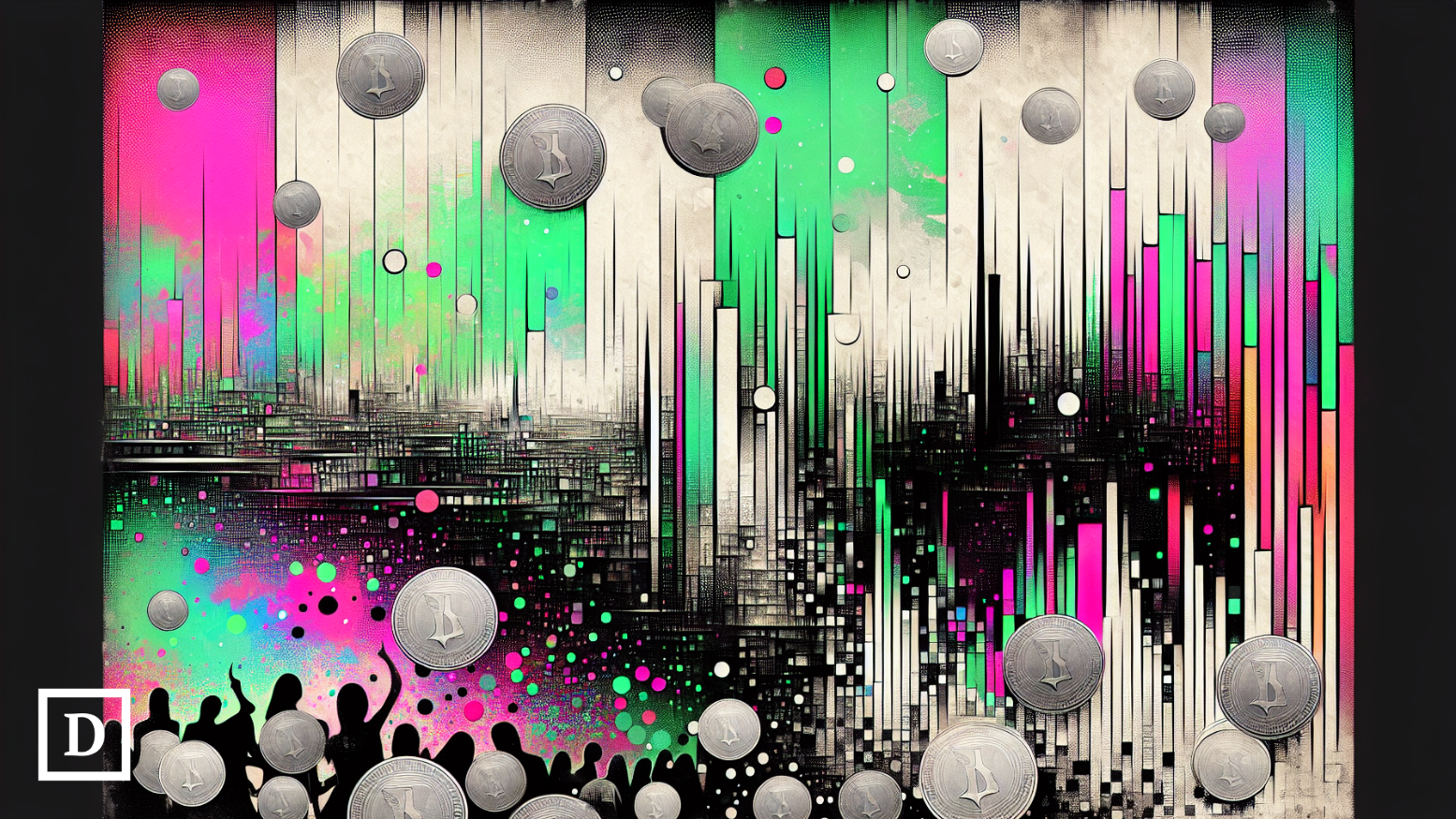BurnLatest Mentions
Track Burn news, price action, and on-chain developments with Crypto Hunter's comprehensive coverage. Our curated feed brings together breaking headlines, technical analysis, protocol updates, and regulatory developments from trusted sources—so you can make informed decisions faster.
- NEW
 New crypto project turns memecoins into economic education tools
New crypto project turns memecoins into economic education toolsVALUE COIN DEVELOPERS launch tokens that burn supply based on real-world economic events. #sponsored
 ZKsync continues 65% weekly rally on burn, staking, buybacks
ZKsync continues 65% weekly rally on burn, staking, buybacksZKsync’s new governance proposal could fundamentally shift how the protocol generates revenue for its holders. ZKsync has continued last week’s rally, with an upgrade that aims to prove its long-term utility and tokenomics. On Tuesday, Alex Gluchowski, CEO and co-founder…
 Shiba Inu price set for steeper crash as burn rate plunges
Shiba Inu price set for steeper crash as burn rate plungesShiba Inu price made a strong bearish breakout as the burn rate plunged, whale selling continued, and activity in Shibarium waned.
 ZKsync Proposes Utility and Revenue Focused Tokenomics Shift
ZKsync Proposes Utility and Revenue Focused Tokenomics ShiftZKsync, the Ethereum Layer 2 leveraging zero-knowledge proofs, has revealed an updated tokenomics proposal for its native token ZK, which would shift it from a pure governance token to a utility token.According to a press release shared with The Defiant, the proposal will see value accrue to the ZK token via its on-chain interoperability fees, and offchain enterprise licensing income. These revenue sources will fund staking rewards, ecosystem funding, and a buyback and burn mechanism.The move addresses the lack of tangible value in governance tokens, and is an extension of the ZKnomics roadmap first published in June. This original outline highlighted the need for usage-driven revenue, programmatic distribution, and a gradual implementation of the ZKnomics shift.To continue reading this as well as other DeFi and Web3 news, visit us at thedefiant.io
 Everything You Need to Know About Dfinity 2.0
Everything You Need to Know About Dfinity 2.0Dfinity is building big plans for Internet Computer 2.0, but how does this play into the wider Dfinity 2.0 vision? Here’s what you need to know. The DFINITY Foundation laid out a plan it calls “Internet Computer 2.0,” positioning its blockchain as a mainstream cloud for “self-writing” apps while proposing deflation-minded tokenomics and a leaner, product-driven organization. The update, published today by founder Dominic Williams, details new “cloud engines,” a push to cut inflation in 2026, and spin-out ventures built to drive adoption. Why Is Node Independence Important for ICP’s Cloud Engines? The headline feature is “cloud engines.” Teams will be able to spin up private ICP subnets through the NNS configurator with guardrails on node independence and geography. Over time, these engines could run across major cloud providers and remain fault-tolerant. Key terms in focus include cloud engines, NNS configurator, and node independence. DFINITY is also shifting how it works. The foundation says it will ship faster with a tighter focus on UX and product fit rather than pure research. That includes clearer packaging, simpler onboarding, and more direct support for builders. Key terms here are DFINITY 2.0, UX, and product fit. On tokenomics, Williams floated “Mission70,” a target to reduce ICP inflation by roughly 70% in 2026. The path runs through lower governance rewards and a burn-based split on engine revenue. The working idea: 80% to node providers and 20% burned. Any change would require an NNS vote. Key terms: Mission70, governance rewards, and burn. DFINITY is also backing spin-outs to pull in users. Beyond Caffeine is pitched as an AI layer for building apps from natural-language prompts. UTOPIA targets private cloud networks. “Convo” remains in stealth. The goal is simple: ship products that bring real usage to ICP. Key terms: Beyond Caffeine, UTOPIA, and Convo. EXPLORE: Top 20 Crypto to Buy in 2025 How Is DFINITY Bringing AI Deeper Into the Internet Computer Stack? DFINITY spent 2024–25 building AI into its core stack. It introduced on-chain inference last year and moved ahead with a public rollout of Caffeine this year. In recent remarks, founder Dominic Williams said Caffeine is meant to let people build and update live applications through simple chat. The system utilizes Motoko and ICP’s runtime to safeguard stored data during upgrades, ensuring that apps remain intact and do not lose information. “You will talk to AI. AI will give you what you want on a URL,” he said. He described AI not as a tool for programmers, but as the system that writes and maintains apps. A new version of Internet Identity is also in testing. It supports passkeys and Google sign-in to make onboarding easier. Ahead of Caffeine’s broader rollout, the team proposed expanding application subnets to make room for more AI-driven app creation. ICP rallied on Monday, rising about +35% while most major tokens slipped. By early Tuesday, it traded near $3.90 on strong volume. Market Cap 24h 7d 30d 1y All Time Now the focus shifts to how this will be managed and when it rolls out. People want to know when the first cloud-engine proposals will reach the NNS, how the Mission70 plan will reduce inflation in practice, and whether Caffeine’s growing user numbers will lead to actual on-chain activity and burn. Traders will also watch for a clear 2.0 roadmap with dates and early enterprise pilots running on these engines. EXPLORE: Best New Cryptocurrencies to Invest in 2025 The post Everything You Need to Know About Dfinity 2.0 appeared first on 99Bitcoins.
 Ethena USDe Market Cap Drops 40% After ‘Black Friday’ October 10 Crash
Ethena USDe Market Cap Drops 40% After ‘Black Friday’ October 10 CrashEthena Labs’ synthetic dollar-pegged token Ethena USDe (USDE) has lost over $5 billion of its market capitalization since the Oct. 10 market crash, after the asset experienced a major stress test. Before the “Black Friday” flash crash — which wiped out over $19 billion in leveraged positions across the market, becoming the largest liquidation event in crypto to date — USDE’s market cap stood above $14.6 billion.Ethen USDe's market cap fell sharply by about $2 billion on Oct. 10-11 as investors rushed to redeem their USDE, exchanging their tokens for the underlying collateral. According to Ethena Labs’ documentation, each USDE redemption burns the returned USDE, which can reduce the overall token supply, and thus the market capitalization.To continue reading this as well as other DeFi and Web3 news, visit us at thedefiant.io
 1 Million SHIB Burn: Will Shiba Inu's Price Bounce Back in November?
1 Million SHIB Burn: Will Shiba Inu's Price Bounce Back in November?1 million Shiba Inu token burn at November's start has fueled hope for SHIB's price recovery, but historical data presents a startling fact that cannot be brushed aside.
 NEAR Cuts Inflation Rate by Half Despite Failed Community Vote
NEAR Cuts Inflation Rate by Half Despite Failed Community VoteNEAR Protocol has upgraded its network with a new update that reduces its annual token inflation rate from 5% to roughly 2.5%, even though the initial governance vote on the proposed change failed to reach the required threshold.The NEAR Protocol team announced today, Oct. 30, that it had completed the upgrade. The so-called halving upgrade curbs token dilution caused by nearly 60 million new NEAR tokens minted annually due to minimal fee burns, while also realigning incentives for on-chain participation and lowering staking yields from roughly 9% to 4.5%, assuming half of the total supply remains staked.To continue reading this as well as other DeFi and Web3 news, visit us at thedefiant.io
 Paxos Mints and Burns $300 Trillion PYUSD on Ethereum
Paxos Mints and Burns $300 Trillion PYUSD on EthereumFintech giant PayPal made an interesting move today, minting $300 trillion of its PYUSD stablecoin on the Ethereum blockchain, briefly making it the largest stablecoin in the world by a landslide.Paxos, which issues PYUSD, minted the supply on Wednesday afternoon and burned it shortly after, confirming it was an accidental mint.To continue reading this as well as other DeFi and Web3 news, visit us at thedefiant.io
